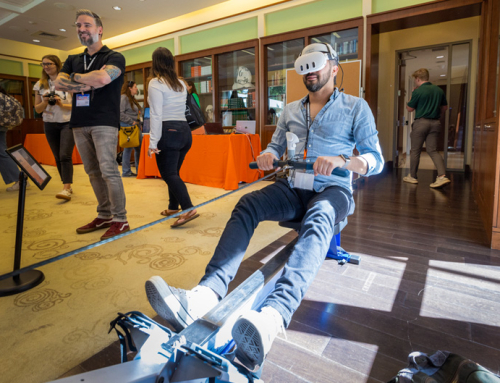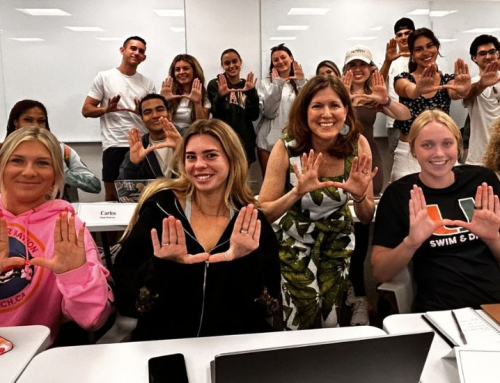Two technology experts with the University of Miami explain the origins of “bots” and their role on the internet today.
By: Janette Neuwahl Tannen
Bots.
They’ve been blamed for influencing public opinion during recent elections or simply annoying users who are scrolling through their chosen social media feed.
So, what are they?
University of Miami computer scientist Ching-Hua Chuan, a research associate professor in the School of Communication’s Interactive Media Department, said bots are simply software programs designed to complete a specific task. Some of the first bots were web crawlers, used to search the internet. But as the web has grown exponentially, and artificial intelligence has improved, the variety of bots has exploded.
“Bots are software programs that look for certain patterns with a goal in mind,” said Sara Rushinek, a professor of business technology and health informatics at the Miami Herbert Business School. “For example, a goal could be getting donations or to raise awareness about a cause.”
The name “bots” refers to robots, because they perform a certain action again and again. But bots today don’t always mean a physical computer, like a Roomba vacuum cleaner, Chuan said.
However, bots can be used for efficiency or can be used malicously on the internet. They have drawn criticism in the news for their role on social media, which has also lured the attention of the U.S. Department of Homeland Security.
“On social media especially, bots are computer programs posting a tweet or a retweet,” Chuan said, adding that Twitter has guidelines asking bot accounts to identify themselves with a label. “These bots are software programs that try to mimic a person.”
There are several types of bots today, according to Rushinek and Chuan. The original bots simply automated specific tasks. Now, with the addition of artificial intelligence, “intelligent bots” are designed to learn and adapt on their own, Rushinek added. Bots can now do things that humans used to do, just faster. Like trade thousands of stocks based on a customer’s unique demands, try to detect credit-card fraud, or flood Twitter or Facebook to urge certain groups of people to support a cause.
“For instance, trading bots can automatically execute trades with the purpose of maximizing profits without human intervention,” Rushinek said.
Other bots need a human response to move forward, like Amazon’s Alexa and Apple’s Siri. These are a type of bot called chatbots, which Chuan studies more closely. They are the digital assistants you see often when logging on to a bank or credit card website. Chuan and Susan Morgan, communication studies professor, have collaborated to create a chatbot to guide participants in determining whether they are qualified to participate in a medical research trial.
“Chatbots are about conversation,” she said. “They are computer programs with the ability to understand what the user is talking about to provide relevant responses. One way to evaluate how good a chatbot performs is to see if it will keep people talking.”
In contrast, social media bots are typically created by a person or company that registers as a developer or programmer on a platform such as Facebook or Twitter, Chuan explained. It takes a few weeks to get approved, and then the programmer can create an application which can include a social media bot. She pointed out that each social media platform has its own toolkit, called an “application programming interface,” which can be used to create bots unique to that platform.
“Essentially, you can automate the process of tweeting or retweeting,” she said.
Originally created to help engage users in marketing campaigns, social media bots allowed companies to forge stronger relationships with their customers, Chuan noted. Therefore, social media platforms supported them. Today, however, these bots are often used for malevolent purposes, like to spread false information, she added. Rushinek said that even advertisements on social media are bots collecting information on the users who click on them.
“Social media companies would want to support this because it is automated support for businesses,” Chuan said. “Businesses don’t need someone sitting there to talk to customers. If you automate it [with bots], you can keep users more engaged. But how this tool is used depends on who uses the tool.”
“Social media companies will say they discourage [bots], but they are making money from them,” Rushinek remarked.
Both experts answered a few questions about bots.
When were bots created?
Rushinek: In some form, bots have been around since the advent of the internet—at least 30 years—but they have become more and more prevalent with the growth of the web and the evolution of social media platforms.
Chuan: The first chatbot, named Eliza, was developed to serve as a mental health counselor in the 1960s. In the beginning, it was like a template: if the user says certain keywords, the bot would reply in a specific way. At times, it was difficult for bots to understand what the user was saying because people don’t all follow grammar rules when we speak (or type). But over the years, as research in natural language processing and artificial intelligence has advanced, we are seeing more and more chatbots. Chatbots also use the internet to train, so the more language that is available—on things like YouTube captions or social media—the more data chatbots can absorb.
Why were bots created, and what are some of the advantages?
Rushinek: Bots were created to be more efficient than humans. The whole idea is speed. They can trade thousands of investment accounts or place thousands of ads on Facebook quickly. Also, targeted advertising is an advantage. With the amount of data available today, companies can get into the micro and nanobits to try and market their products toward certain groups of people.
Chuan: On apps and webpages today, chatbots try to provide more information and keep users or customers engaged, rather than clicking on to another website.
What are some of the disadvantages?
Chuan: Bots can disseminate misinformation or promote conspiracy theories.
Rushinek: Bots didn’t start off on their own, people programmed them. And, then they released them like spiders crawling the internet. They are used on Facebook so much, because people creating them can target certain age groups and localities. In the last presidential election, there were a lot of questionnaires on Facebook. And, once you completed the questions, your data was taken. Even though people thought it was a simple personality test. Then, companies could feed you information based on your responses.
How influential are social media bots?
Rushinek: Extremely. We don’t even know how influential they are because, for example, when you look at Twitter, you don’t always know if that’s a real person writing the Tweet—especially the responses.
How can you determine if you are interacting with a bot on social media or if it is a human?
Chuan: It’s getting trickier and trickier. But the general signs are if you look at an account’s profile and there’s no information, it is probably a bot. Also, if you’re on Twitter and there are 10 tweets in 10 seconds it’s obvious that’s a bot. There are some indications that this is not human behavior, which we can easily spot.
Rushinek: Right now, humans behave differently than bots. Humans get tired after they tweet a lot. But after a while, bots will get smarter too, so they won’t be detected as easily.
Is there any way to combat nefarious bots?
Rushinek: With other bots. There are now a number of companies and research happening all over the world to determine whether users are bots or not.
This article originally appeared at https://news.miami.edu/stories/2020/07/are-automated-software-applications-efficient-or-malicious-malware.html.






